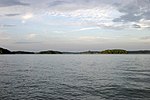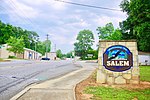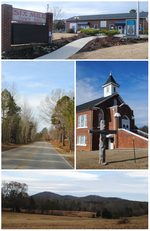Fort Prince George (South Carolina)
18th-century Cherokee historyBritish forts in the United StatesBuildings and structures in Pickens County, South CarolinaColonial forts in South CarolinaFortification stubs ... and 3 more
Forts in South CarolinaPre-statehood history of South CarolinaSouth Carolina geography stubs
Fort Prince George was a fort constructed in 1753 in the Province of South Carolina, on the Cherokee Path across the Keowee River from the Cherokee town of Keowee. The fort was named for the Prince of Wales, who would later become King George III of the United Kingdom. It was the principal Carolinian trading post among the Cherokee "Lower Towns".
Excerpt from the Wikipedia article Fort Prince George (South Carolina) (License: CC BY-SA 3.0, Authors).Fort Prince George (South Carolina)
Squirrel Hill,
Geographical coordinates (GPS) Address Nearby Places Show on map
Geographical coordinates (GPS)
| Latitude | Longitude |
|---|---|
| N 34.858055555556 ° | E -82.893888888889 ° |
Address
Squirrel Hill
Squirrel Hill
South Carolina, United States
Open on Google Maps







